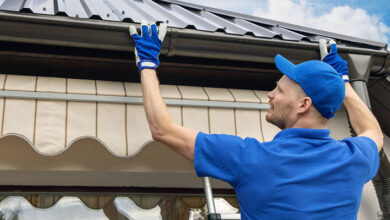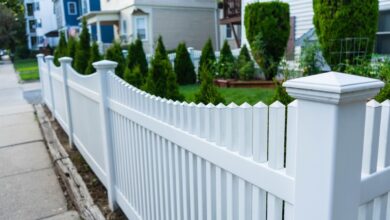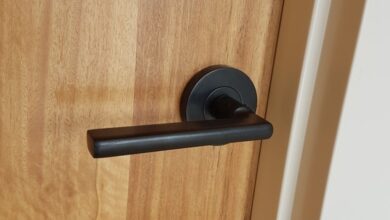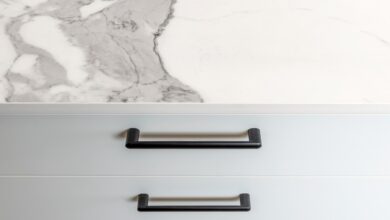Eco-Friendly Bathroom Remodeling: Sustainable Materials and Water-Saving Fixtures
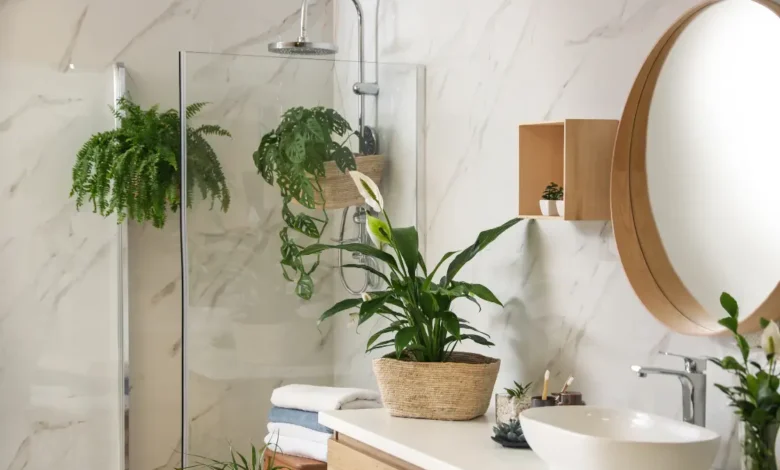
As sustainability becomes a priority for many homeowners, bathroom remodeling projects are increasingly focused on eco-friendly solutions. Traditional renovations often involve excessive water usage, energy consumption, and waste production. However, by selecting sustainable materials and incorporating water-saving fixtures, a bathroom can be both environmentally responsible and stylish.
Sustainable bathroom remodeling is about making choices that reduce environmental impact without compromising design or functionality. From low-flow toilets to recycled tiles, small changes can have a significant effect on water conservation, energy efficiency, and indoor air quality. Additionally, eco-friendly materials often last longer, making them a smart investment in the long run.
Whether planning a full bathroom remodeling project or making gradual upgrades, there are numerous ways to create a greener space. Renken Remodeling understands the importance of sustainability in modern home design and offers solutions that balance efficiency, durability, and aesthetics.
1. Choosing Sustainable Bathroom Materials
The materials used in a bathroom renovation play a crucial role in sustainability. Opting for recycled, renewable, or low-impact materials reduces environmental harm while maintaining a high-quality aesthetic.
✔ Recycled glass tiles – Made from post-consumer glass, these tiles offer a modern look while keeping waste out of landfills.
✔ Bamboo vanities and cabinetry – A renewable alternative to traditional wood, bamboo grows quickly and is highly durable.
✔ Reclaimed wood – Adds warmth and character while reducing deforestation.
✔ Recycled metal fixtures – Brass, copper, and aluminum fixtures can be repurposed into stylish, high-end bathroom hardware.
✔ VOC-free paints and sealants – Improve indoor air quality by reducing harmful chemical emissions.
Using eco-friendly materials ensures that the bathroom remains both functional and environmentally conscious.
2. Installing Water-Saving Fixtures
Bathrooms account for a significant portion of household water consumption. Switching to water-efficient fixtures helps conserve resources while lowering utility bills.
✔ Low-flow toilets – Use significantly less water per flush compared to traditional models, saving thousands of gallons annually.
✔ Dual-flush toilets – Offer two flushing options for liquid and solid waste, reducing unnecessary water use.
✔ Water-efficient faucets – Reduce water flow while maintaining strong pressure, minimizing waste.
✔ Low-flow showerheads – Use aeration technology to provide a full spray while using less water.
✔ Touchless faucets – Prevent unnecessary water usage by only activating when needed.
Even small fixture upgrades can lead to substantial water conservation over time.
3. Energy-Efficient Lighting for a Greener Bathroom
Lighting plays an essential role in any bathroom, but traditional bulbs can be energy-intensive. Switching to energy-efficient lighting reduces power consumption while maintaining bright, functional illumination.
✔ LED bulbs – Use up to 80% less energy than traditional incandescent bulbs while lasting significantly longer.
✔ Smart lighting systems – Allow homeowners to control brightness and energy use through mobile apps or voice commands.
✔ Motion-sensor lighting – Automatically turns off when not in use, preventing unnecessary electricity waste.
✔ Skylights and natural light – Reduce dependence on artificial lighting while creating a bright, airy feel.
Using energy-efficient lighting solutions enhances both sustainability and overall bathroom ambiance.
4. Eco-Friendly Flooring Options
The right flooring can add durability and style to a bathroom while reducing environmental impact. Sustainable flooring choices provide water resistance, longevity, and a reduced carbon footprint.
✔ Cork flooring – Naturally antimicrobial and harvested from tree bark without harming the tree, making it a renewable choice.
✔ Recycled glass tiles – Offer a sleek, modern appearance while repurposing waste materials.
✔ Bamboo flooring – Highly durable and resistant to moisture, making it a great alternative to hardwood.
✔ Linoleum (not vinyl) – Made from natural materials like linseed oil and jute, linoleum is biodegradable and long-lasting.
✔ Concrete flooring – An energy-efficient option that retains heat well, reducing the need for additional heating.
Sustainable flooring options provide both visual appeal and environmental benefits.
5. Smart Water Heating Solutions
Water heating accounts for a large portion of household energy use. Installing an energy-efficient water heating system can reduce energy consumption while ensuring reliable hot water.
✔ Tankless water heaters – Heat water on demand, eliminating the need for a constantly heated storage tank.
✔ Solar water heaters – Use the sun’s energy to heat water, significantly reducing reliance on electricity or gas.
✔ Heat pump water heaters – Capture heat from the air to warm water, offering a highly energy-efficient alternative.
✔ Insulated hot water pipes – Reduce heat loss, ensuring water stays warm without excessive energy use.
Upgrading to an eco-friendly water heating system leads to long-term cost savings and energy efficiency.
6. Reducing Waste with Sustainable Bathroom Practices
Beyond materials and fixtures, small daily habits can make a bathroom more eco-friendly. Implementing simple practices helps minimize waste and energy consumption.
✔ Use refillable soap dispensers – Reduces plastic waste from single-use soap bottles.
✔ Install a bathroom recycling bin – Encourages proper disposal of packaging, paper, and other recyclable materials.
✔ Choose biodegradable cleaning products – Avoids harsh chemicals that can harm the environment.
✔ Use organic cotton towels and bath mats – Made from sustainable, pesticide-free cotton.
Sustainability isn’t just about the renovation process—it’s also about long-term eco-friendly habits.
7. Incorporating Green Plants for Better Air Quality
Adding plants to a bathroom not only enhances the décor but also improves indoor air quality. Certain plants thrive in humid environments while naturally filtering toxins.
✔ Aloe Vera – Absorbs airborne chemicals while providing natural skin-healing properties.
✔ Boston Fern – Helps maintain humidity levels and filters indoor air pollutants.
✔ Snake Plant – Thrives in low light and removes toxins like formaldehyde and benzene.
✔ Peace Lily – Reduces mold spores and enhances oxygen levels.
Bringing greenery into the bathroom creates a refreshing, spa-like atmosphere while contributing to a healthier home environment.
8. Designing for Longevity and Durability
Sustainable remodeling isn’t just about materials—it’s also about making choices that reduce the need for future renovations. Choosing durable, timeless designs prevents excessive waste and additional resource consumption.
✔ Neutral, classic color palettes – Ensures the bathroom remains stylish for years without needing frequent updates.
✔ Quality over quantity – Investing in durable fixtures and materials reduces the need for replacements.
✔ Modular designs – Allow for easy upgrades or changes without requiring a full renovation.
Prioritizing longevity helps reduce environmental impact while saving money on future remodels.
Final Thoughts
Sustainable bathroom remodeling is an investment in both the environment and long-term home efficiency. By choosing eco-friendly materials, water-saving fixtures, and energy-efficient lighting, homeowners can reduce their carbon footprint while creating a stylish and functional space.
Green remodeling doesn’t require sacrificing aesthetics or quality. With thoughtful design choices and sustainable solutions, any bathroom can be transformed into an eco-conscious retreat. Renken Remodeling recognizes the value of environmentally friendly home improvements and provides expert guidance on integrating sustainable elements into modern bathroom designs.
A greener bathroom is not only better for the planet—it also promotes healthier living, lowers utility costs, and enhances overall home value. Making small, sustainable changes today ensures a long-lasting, efficient bathroom for years to come.
